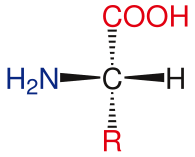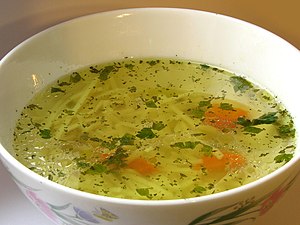January 28 - 30, 2011
2011 – Metal 7 Year
Whereas 2010 (a Soil 8 year) brought many, often drastic, changes in social, economic and financial areas, and on the personal level as well, 2011 (a Metal 7 year) will bring more pleasant influences with new friendships and personal fulfillment. 2011 is not a year for a leap in the dark, but will be an excellent time for achieving better health and putting energy into personal relationships. Persons born in a Soil 5, Metal 6, Soil 2 or Tree 4 year will experience more lightness and the potential to flourish. Persons born in a Tree 3, Soil 8 or Fire 9 year will be able to strengthen their energy. Water 1 persons will experience a strong desire to drastically change their life. For Metal 7 persons it is advisable to stay put, in order to go through potentially hectic times in a harmonious way.
Whereas 2010 (a Soil 8 year) brought many, often drastic, changes in social, economic and financial areas, and on the personal level as well, 2011 (a Metal 7 year) will bring more pleasant influences with new friendships and personal fulfillment. 2011 is not a year for a leap in the dark, but will be an excellent time for achieving better health and putting energy into personal relationships. Persons born in a Soil 5, Metal 6, Soil 2 or Tree 4 year will experience more lightness and the potential to flourish. Persons born in a Tree 3, Soil 8 or Fire 9 year will be able to strengthen their energy. Water 1 persons will experience a strong desire to drastically change their life. For Metal 7 persons it is advisable to stay put, in order to go through potentially hectic times in a harmonious way.
Your Personal Predictions:
In 2011, each of us will move into a different 9-Star position. Discover exactly what influences the new year will bring to you – including which plans are likely to succeed, and which actions to avoid. Learn the most promising months for your relations, your health, travel, finances and career. This seminar will help prepare you on many levels for the year to come. A special class will be conducted on 9 Star Ki in a broader scope: the cycle of 81 years from 1955 till 2036.
In 2011, each of us will move into a different 9-Star position. Discover exactly what influences the new year will bring to you – including which plans are likely to succeed, and which actions to avoid. Learn the most promising months for your relations, your health, travel, finances and career. This seminar will help prepare you on many levels for the year to come. A special class will be conducted on 9 Star Ki in a broader scope: the cycle of 81 years from 1955 till 2036.
Program
| Friday January 28 | 17.00 – 18.00 | Arrival and Registration |
| 18.00 – 19.00 | Dinner | |
| 19.30 – 21.00 | Lecture – Introduction to Nine Star Ki Astrology | |
| Saturday January 29 | 08.00 – 09.00 | Do – in exercises |
| 09.00 – 09.30 | Breakfast | |
| 10.00 – 12.30 | Lecture – Nine Star Ki in Relations | |
| 12.30 – 13.30 | Lunch | |
| 14.30 – 18.00 | Lecture – Personal Predictions 2011 | |
| 18.00 – 19.30 | Dinner | |
| Sunday January 30 | 08.00 – 09.00 | Do – in exercises |
| 09.00 – 09.30 | Breakfast | |
| 10.00 – 12.30 | Lecture – Global and Personal Predictions 2011 | |
| 12.30 – 13.30 | Lunch | |
| 14.00 – 17.30 | Lecture – Global Predictions before and after 2036 ( 81 year cycle) |
January 28 - 30, 2011
Friday 17.00h till Sunday 17.00h
Place: The Kushi Institute of Europe, Amsterdam
Friday 17.00h till Sunday 17.00h
Place: The Kushi Institute of Europe, Amsterdam
Cost
€275 per weekend, 2nd person 20% discount
In combination with 2 or more of the 3 fascinating study weekends 20% discount.
Prices include classes, study material, warm macrobiotic meals, accommodation (limited) in 2-3 person bedroom. Your registration is final after receiving your non refundable down payment of Euro 50
Classes are English spoken
Registration
Your registration is final after receiving your registration form and non refundable down payment of 50 Euro.
Your registration is final after receiving your registration form and non refundable down payment of 50 Euro.
Refunds
In case of cancellation more than 2 weeks prior to a course, full refund is granted except for the non-refundable down payment. Less than two weeks prior to a course or if interrupting a course, no refund is possible.
In case of cancellation more than 2 weeks prior to a course, full refund is granted except for the non-refundable down payment. Less than two weeks prior to a course or if interrupting a course, no refund is possible.
The 9 Star Ki Chinese Astrology weekend is 1 of the 3 Fascinating Study Weekends with Adelbert and Wieke Nelissen.
Please, click here for the information on other weekend:
 The 5 Transformations – Compas for Every Day Life
The 5 Transformations – Compas for Every Day Life
April 22 - 25, 2011
Please, click here for the information on other weekend:
April 22 - 25, 2011
Each additional weekend you take will receive a 20% discount for you as well as a second person.













 ideal for warm summers, as it is rather Yin. I give it a Yin -4 on my Yin Yang food scale. If you do not want to use
ideal for warm summers, as it is rather Yin. I give it a Yin -4 on my Yin Yang food scale. If you do not want to use 





